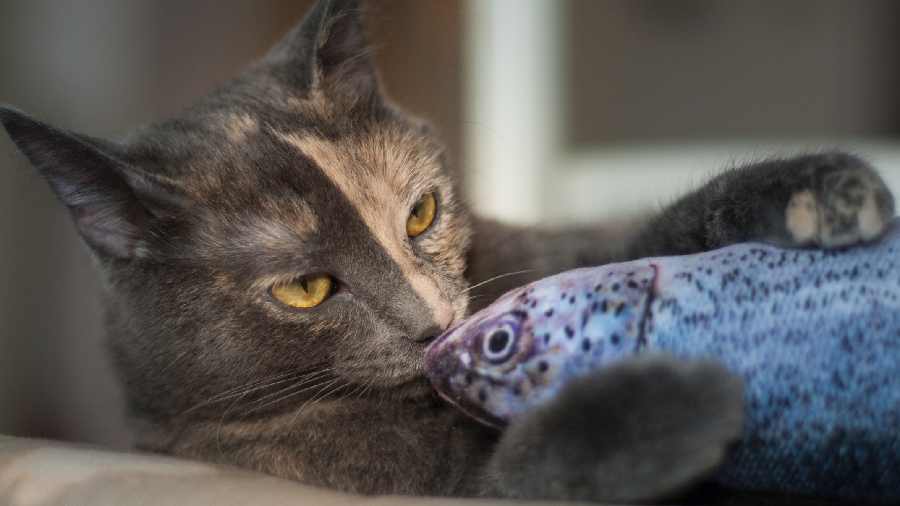Stereotypes are how we roll these days and as stereotypes go, Bengalis are synonymous with fish. Random strangers would ask me incredulously every time I refused fish, “But aren’t you Bengali?” Yes, I am Bengali and no, I don’t adore fish. Now that that is out of the way and the world is still turning, let’s talk fish.
When I was a child, like in all Bengali households those days, fish was daily fare at home. Lunch was incomplete without a maachher jhol or jhaal or kalia — different types of fish curry all. Sometimes there would also be maachh bhaja, fried fish, or kucho maachher charchari, a dry curry made with small freshwater fish. I never did like fish curry, usually made with rui or katla, but I had to eat it. Clean up your plate, that was the rule. No one was sympathetic to my complaint that the fish smelt, well, fishy.
As I grew up, I came up with an innovative way to avoid fish and its stench. I was always a slow eater, I became even more so. I would wait for everybody to finish up and leave before feeding my portion of fish to the family dog who sat quietly under the table. That was the routine every day till I left for college. My family was lulled into believing that I had overcome my distaste of fish, everyone but my brother, who was the recipient of the fishy bounty when we went places where there was no dog waiting.
In college, away from Bengal, I was ecstatic to discover that they did not serve fish in the hostel mess. Ever. But I got a lot of invitations from acquaintances and friends of friends for homecooked Bengali food because “you must be missing fish”. I learnt to adroitly turn down these well-wishers but sometimes I got caught out. And that was my introduction to the strange looks a fish-hating Bengali gets.
A decade after I officially gave up fish, I accompanied friends to the native village of one of them near Bakkhali in South 24-Parganas. The village was a 30-minute walk from the nearest road and boasted of no concrete houses. When we sat down to a lunch of rice, alu seddho and maachher jhol on the spanking clean verandah of a double-storeyed mud hut, I realised that I couldn’t possibly refuse the fish without causing a great deal of embarrassment.
That fish was a revelation. Caught that morning from the pond next door, it melted in the mouth and had no fishy smell whatsoever. Now that was a fish I could have on my plate.
When my son turned two and started noticing that I never had fish on my plate, I realised my days of avoiding fish were over. If I wanted him to have fish, I would have to have it too. So it became my mission in life to procure an approximation of that fresh fish I had had in Bakkhali.
I soon realised that most fish found in the market have lived on ice a long while. And the freshest-looking ones — red gills, shiny skin — were the worst offenders. They had actually been preserved with formaldehyde, which has a distinct smell usually lost among the other strong smells in the fish market. But the eyes are a dead giveaway, fresh fish have clear eyes that bulge. If the eyes are sunken or clouded or faded, the fish is not fresh. Unfortunately, if you apply the eye test, sometimes you won’t be able to buy any fish in the market as the eyes start clouding after two days and most fish take longer than that to reach the market.
If you don’t have much faith in your nose, trust your eyes. Visit the fishmonger whose stall is buzzing with flies, these insects detect contamination much better and keep away. A kind old gentleman offered me this nugget of wisdom when he overheard me puzzling over fresh fish. It is only when you start looking that you will realise just how few flies there are in a fish market. So I went to the stall that passed the fly test and met a fishmonger with a missing thumb. He heard me out patiently and suggested I come back in two days.
Two days later, he had a rohu for me that was much smaller than the size I had been taught to buy. The large ones come from Andhra Pradesh and are impossible to get fresh, the man explained. This one was from a local fish farm, which could not afford to grow the fish larger than one or one-and-a-half kilos. If I wanted fresh fish, I would have to buy small.
By the time my daughter, born five years after my son, turned two, I had become an expert in buying fresh fish. The repertoire of fish we ate at home had also grown to include fish like pabda, topshe, mourola, tilapia and Bombay duck. But where my son loves fish, my daughter barely tolerates it. She too is waiting impatiently to turn 18 so that she can officially give it up.
All the hard work I put in to be able to eat fish regularly has given me only 50 per cent success.











